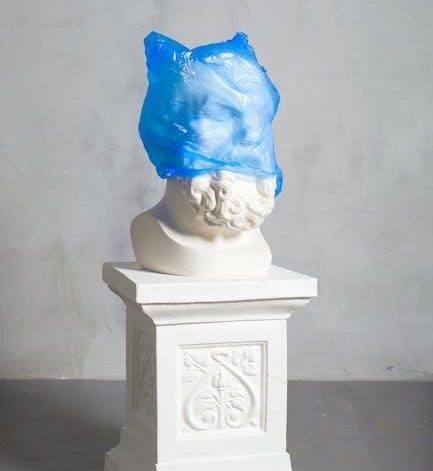Master Harold and the Boys is a poignant one-act play set in 1950s South Africa, exploring themes of race, friendship, and identity under apartheid.
1.1 Overview of the Play
Master Harold and the Boys is a one-act play set in a tearoom in Port Elizabeth, South Africa, during the apartheid era of the 1950s. The story revolves around Hally, a young white boy, and his interactions with Sam and Willie, two black men who work at the tearoom. As Hally’s father prepares to return home, tensions rise, revealing the complexities of race, friendship, and identity. The play explores themes of racial conflict and personal growth through their intertwined relationships.
1.2 Historical Context and Setting
Master Harold and the Boys is set in 1950s South Africa during the apartheid era, a time of intense racial segregation and oppression. The play takes place in a tearoom in Port Elizabeth, where the strict social hierarchies of the time are evident. The year is 1950, and the oppressive atmosphere of apartheid permeates every interaction. The tearoom serves as a microcosm of the broader societal tensions, highlighting the deep-seated racial divisions and the struggles of individuals navigating this fraught environment.

The Playwright: Athol Fugard
Athol Fugard is a celebrated South African playwright, born in 1932, known for his poignant portrayal of racial tensions and social injustices during apartheid.

2.1 Biography of Athol Fugard
Athol Fugard, born June 11, 1932, in Middelburg, South Africa, is a renowned playwright and actor. His work reflects the racial and social complexities of apartheid. Fugard’s early life influenced his writing, drawing from his mixed heritage and experiences with injustice. He gained international acclaim for plays like Master Harold and the Boys, which explore themes of identity, morality, and human connection amidst oppression. His contributions remain pivotal in South African literature and global theater.
2.2 Fugard’s Role in South African Literature
Athol Fugard is a central figure in South African literature, known for his bold exploration of apartheid’s social and racial complexities. His works, including Master Harold and the Boys, provide a powerful voice for marginalized communities, bridging racial divides through storytelling. Fugard’s writing often blends personal experiences with broader political themes, making him a pivotal figure in shedding light on South Africa’s tumultuous history. His influence extends globally, with his plays widely studied and performed, cementing his legacy as a champion of justice and human dignity.
Major Themes in “Master Harold and the Boys”
The play explores racial tensions, friendship, betrayal, and identity, set against the backdrop of apartheid, using symbols like the tearoom and kite to convey deeper meanings.
3.1 Racial Tensions and Apartheid
In Master Harold and the Boys, apartheid’s oppressive regime is vividly portrayed through Hally’s interactions with Sam and Willie. The tearoom serves as a microcosm of societal segregation, where racial hierarchies are enforced. Hally’s father embodies the oppressive system, while Sam’s wisdom and dignity contrast with the injustice. The play highlights how apartheid erodes human relationships, fostering resentment and undermining mutual respect, ultimately revealing the profound emotional toll of systemic racism on both oppressors and oppressed.
3.2 Friendship and Betrayal
The complex bond between Hally, Sam, and Willie is central to the play, exploring themes of friendship and betrayal. Hally, conflicted by his loyalty to Sam and the societal norms of apartheid, ultimately betrays Sam in a moment of anger. This betrayal, rooted in his internal struggle and the oppressive environment, underscores the fragility of relationships in a racially divided world. The play poignantly illustrates how even deep connections can be shattered by the pressures of prejudice and power imbalances.
3.3 Coming of Age and Identity
Hally’s journey in Master Harold and the Boys is a poignant exploration of identity and self-discovery. Set against the backdrop of apartheid, Hally grapples with his role in a racially divided society while navigating his complicated relationship with his father. The play captures his internal conflict as he seeks validation and understanding, ultimately revealing the fragility of youth and the struggle to define oneself amidst oppressive circumstances. This theme highlights the universal challenges of adolescence intertwined with the unique complexities of South Africa’s apartheid era.

Key Characters and Their Roles
The play revolves around Hally, a young white boy, and his complex relationships with Sam and Willie, black employees at his family’s tearoom, exploring power dynamics and personal growth.
4.1 Hally: The Protagonist
Hally is the central character, a teenage boy navigating a tense racial and familial environment. His interactions with Sam and Willie reveal his internal conflict between loyalty and prejudice. Hally’s father, an alcoholic, symbolizes the oppressive forces shaping his worldview. Throughout the play, Hally’s actions and decisions highlight his struggle with identity and morality, making him a complex and dynamic protagonist in Athol Fugard’s exploration of apartheid’s impact on individuals.
4.2 Sam: The Mentor Figure
Sam is a wise and compassionate black man who works at the tearoom owned by Hally’s family. He serves as a father figure to Hally, offering guidance and wisdom. Sam’s patience and understanding contrast with Hally’s youthful turmoil, creating a deep bond. His influence helps shape Hally’s moral development, but their relationship is complicated by the racial divide of apartheid. Sam’s calm demeanor and life lessons provide a stabilizing force in Hally’s chaotic world, highlighting the tragedy of their bond being constrained by societal norms.
4.3 Willie: The Complex Friend
Willie is a complex character who works alongside Sam at the tearoom. He is less wise than Sam but equally significant in Hally’s life. Willie’s impending trial and personal struggles add depth to his character, revealing his vulnerabilities. His friendship with Hally is marked by loyalty, yet it is strained by the societal norms of apartheid. Willie’s interactions with Sam highlight their differing personalities, with Willie often acting as a foil to Sam’s wisdom. His role in the play underscores the nuanced dynamics of friendship and oppression.
4.4 Hally’s Father: The Symbol of Oppression
Hally’s father is a pivotal figure, embodying the oppressive forces of apartheid and patriarchy. His absence and alcoholism shape Hally’s resentment and internal conflict. The father represents systemic oppression, reinforcing racial and social hierarchies. His return home signifies a looming threat to Hally’s fragile sense of identity and control. Through the father, Fugard highlights the destructive legacy of apartheid and toxic masculinity, underscoring the societal norms that perpetuate inequality and domination.
Symbolism and Literary Devices
Athol Fugard masterfully employs symbolism and literary devices to convey themes of apartheid, identity, and societal conflict, enriching the play’s emotional and political depth through subtle imagery.
5.1 The Tearoom as a Symbol of Apartheid
The tearoom in Master Harold and the Boys serves as a potent symbol of apartheid, reflecting the racial and social hierarchies of the time. Owned by Hally’s family, it represents a space where segregation is both enforced and subtly undermined. Sam and Willie, the black employees, navigate this environment with resilience, while Hally’s interactions reveal the complexities of privilege and prejudice. The tearoom’s confined setting mirrors the oppressive nature of apartheid, highlighting the entrapment and tension inherent in a society divided by race and power.
5.2 The Kite as a Symbol of Freedom
The kite in Master Harold and the Boys symbolizes freedom and escape from oppression. Sam and Willie’s shared dream of flying a kite represents their longing for liberation and equality. The kite’s flight contrasts sharply with the confined, oppressive environment of the tearoom, offering a glimpse of hope and transcendence. Through this imagery, Fugard highlights the human spirit’s desire to rise above the constraints of apartheid, embodying the universal yearning for freedom and dignity in the face of systemic injustice.

The Play’s Significance and Impact
Master Harold and the Boys holds profound significance as a critique of apartheid and racial inequalities. Its vivid portrayal of human dignity and friendship resonates globally, making it a cornerstone of South African literature and a powerful tool for social reflection and education, leaving a lasting legacy in theater history.
6.1 Cultural and Social Relevance
Master Harold and the Boys remains a powerful exploration of South Africa’s apartheid era, offering a stark portrayal of racial dynamics and human connection. Its cultural relevance lies in its unflinching critique of systemic oppression and its ability to provoke dialogue about inequality. The play’s social impact is evident in its universal themes of dignity, morality, and the consequences of prejudice, resonating deeply with audiences and inspiring reflection on the broader implications of racism and segregation.
6.2 Autobiographical Elements
Athol Fugard drew heavily from his own life in crafting Master Harold and the Boys. The character of Hally mirrors Fugard’s youth, exploring themes of identity and racial conflict. The relationships between Hally, Sam, and Willie reflect Fugard’s real-life interactions with Black South Africans. The play’s setting, a tearoom, and the return of Hally’s father echo Fugard’s personal experiences, blending fiction with autobiography to create a deeply personal and emotionally charged narrative.
6.3 Critical Reception and Legacy
Master Harold and the Boys received widespread acclaim for its raw portrayal of apartheid’s societal impact. Critics praised its emotional depth and nuanced characters. The play is celebrated for its unflinching honesty, making it a landmark in South African literature. Its exploration of race and identity continues to resonate globally, solidifying its legacy as a powerful commentary on human relationships under oppression. Fugard’s work remains a vital tool for understanding apartheid’s enduring effects on society and individual lives.




